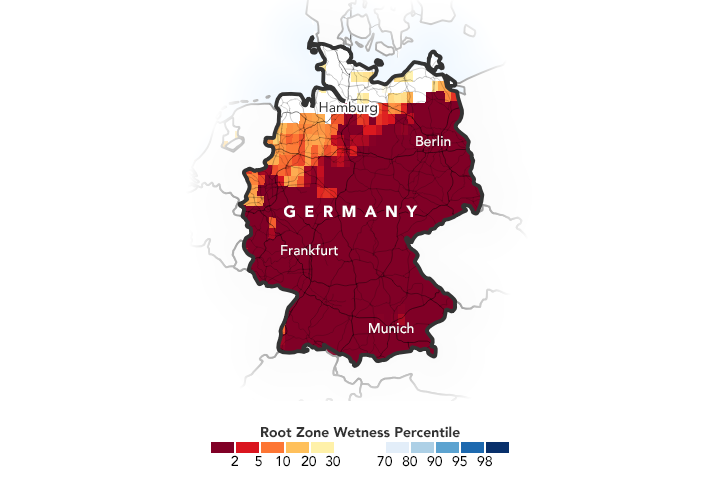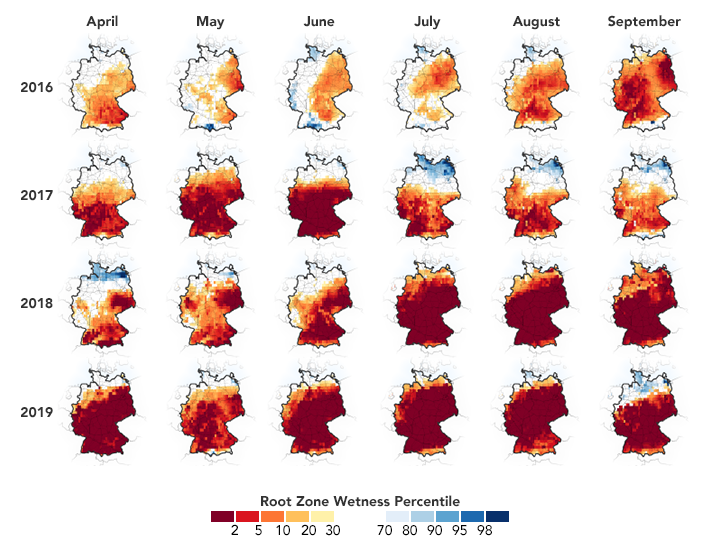


Germany may be heading toward its third summer of drought in a row due to high temperatures and sparse precipitation. Forests have been threatened by drought and disease in recent months. In April 2020, the Rhine River was reportedly running low and hampering cargo ship traffic through the country. If no significant rain falls in May, some forecasters believe the country’s agricultural industry could be headed for trouble.
The parched conditions in spring 2020 follow the warmest December to February on record for Europe. Germany also had a particularly dry spring, with little to no rain in many areas since mid-March. The German Meteorological Service reported that April 2020 was the sunniest and third driest April on record. Meteorologists were forecasting rain for early May but were unsure how much it might offset the precipitation deficit.
The map above shows root zone soil moisture in Germany for April 2020; the maps below show the same measurement for April through September from 2016-2019. The colors depict the wetness percentile; that is, how the amount of soil moisture compared to long-term records for the month. Orange and red areas depict deficits in soil moisture, while blue areas hold more water than usual.

The maps are based on data from the Gravity Recovery and Climate Experiment Follow On (GRACE-FO) mission, a pair of spacecraft that detect the movement of water based on variations in Earth’s gravity field. GRACE measures subtle shifts in gravity from month to month. Variations in land topography or ocean tides change the distribution of Earth’s mass; the addition or subtraction of water in various regions also changes the gravity field. Those data are integrated with other ground-based observations into a numerical model of water and energy processes at the land surface.
In 2016, Europe experienced one of its hottest years on record in the wake of a strong El Niño. In 2018, drought caused harvest damage of “national proportions”, leading the government to provide financial aid to farmers. 2019 also brought significant crop failures and income loss due to drought conditions.
These recent years fit a longer trend of warmer temperatures and reduced groundwater storage. According to the German government’s Climate Monitoring Report, available water in agricultural soils has decreased over the past 50 years. Also, hot days—where temperatures rise above 30°C (86°F)—are also becoming more common. In 1951, Germany experienced about three hot days in an average year; now, there are ten.
NASA Earth Observatory images by Joshua Stevens, using GRACE data from the National Drought Mitigation Center. Story by Kasha Patel.